In spite of the fact that Christopher owned and ran Sledmere and that the family now numbered seven, Parson and Mrs Sykes remained ensconced there, while their son and daughter-in-law were still living at Wheldrake. ‘As we have not met with a house to our satisfaction,’ Christopher had written to his brother-in-law, William Egerton, in December, 1775, ‘we shall probably stay here.’ 43 They appear to have lived fairly modestly with relatively few servants. There was Styan, the butler; William, Christopher’s valet, who had been with him since his bachelor days; Charlotte, Bessy’s personal maid; various ‘servant women’; a housekeeper; a gardener, Richard Cooper; a coachman, and a full time nanny, Nurse Moore, who was to be the longest serving member of the household. At the various times of Bessy’s pregnancies, the account book also shows payments to ‘Nurses’ and, in 1775, to a ‘Wet Nurse’.
Christopher did not keep a detailed diary recounting the events of his life, but in a series of little pocket books, sometimes ‘Goldsmith’s Almanack’ or perhaps ‘The Ladies Own Memorandum Book, or Daily Pocket Journal’, he briefly noted down his guests and dining companions, financial and estate matters, memoranda of servants, his travels, notes about gardening, etc., In the midst of which trivia are the occasional poignant reminders of more important personal matters. ‘Mrs Sykes miscarried for the first time in her life after a months severe illness,’ 44 ran the entry for 15 December, 1779, for example, while on 22 March, 1778, ‘Little Tom Tatton, my Brother’s Son died suddenly.’ 45 Reading through some of the other entries for 1778, the first year of Elizabeth Sykes’s life, one gets some idea of the domestic life of Christopher and Bessy.
There are few entries during the first six months, other than Christopher going back and forth to Sledmere. On 12 June, they set off on holiday, not to London or the Continent, but to the nearby east coast town of Bridlington, a popular resort for the newly fashionable pastime of sea bathing. ‘Wife and Self dined at Sledmere,’ he wrote. ‘Got to Hilderthorpe at night. Servants dined at Wetwang.’ Hilderthorpe, a coastal village to the south of Bridlington, was part of Christopher’s estates and the site of the family’s summer retreat, Flat Top Farm, since 1776. This was a three-storey house, built upon rising ground above Bridlington Bay and commanding magnificent views out to sea. The ground and top floors consisted of permanent accommodation for the tenant farmer, while the first floor, which had an octagonal salon and well-proportioned lodging rooms, was reserved for the occasional use of the family. It is important because it was almost certainly the first house designed by Christopher, being remarkably similar to other architectural drawings made by him in the Library at Sledmere.
On this occasion they stayed at Hilderthorpe for a month, and on 13 July, Christopher recorded ‘I went to Sledmere to dinner. Wife went to Wheldrake.’ Nineteen August found them in the midst of a house party. ‘Wheldrake. Mr and Miss Sarrandes, Mr and Mrs Daniel, Miss Simpson, Miss Collings, Mr and Mrs Paul, Wife and self fished in the old River, dined, drank tea and danced upon the rugs.’ A charming scene, repeated the following day. ‘All the above drank tea and danced upon the grass.’ On 31 August, Christopher rode over to Sledmere for dinner and ‘sent Styan to wait for Mr Brown at Wetwang.’ He did not turn up and finally arrived on 5 September. ‘Mr Brown came this morning and we rode about, dined and lodged at Wetwang.’ Brown left the next day. ‘I returned home to dinner, met my Wife and Tatton,’ noted Christopher. Ten days later the whole family visited Sledmere and also on 16 September ‘Wife and Self went to Castle Howard. Dined there, drank tea at Eddlethorpe Grange and returned to Sledmere at night.’ They stayed for a week and on 24 September ‘Wife, self and children returned to Wheldrake at night.’
A curious letter written at this time from Christopher to an old Oxford tutor, the Revd William Cleaver, throws some light on the education of his children. Evidently the boys had a tutor at Wheldrake, who had been teaching them to read. He was, however, on the point of leaving, and in asking Cleaver to help him find a replacement, Christopher made it quite clear that he was unhappy with the way the children spoke, a sign that in the aristocratic society to which he aspired, local dialects were beginning to be frowned upon. ‘The person who has had the instruction of my Children hitherto is going into another line of life,’ he wrote on 15 September, ‘indeed he is no loss as he has done them all the Good he is capable of which was to teach them to read English tho’ but Ill. If you know of any Young Man you think fit to Succeed him, who can correct their Yorkshire tone and instruct them to Your Wishes (I am sure it will be to mine) I wish you would let me know to continue with them till you and he think they are fit for School.’ 46 On 6 October, 1778, Christopher noted in his diary, ‘Master Tatton and Christopher went to Mr Simpson to be under his care.’ They were aged six and four respectively.
‘The Great Brown’s’ return in September bore fruit when, two months later in November, he produced his ‘Plan for the intended Alterations at Sledmere’. Christopher immediately preferred it to White’s plan because, while new plantations encircled the Park to its south and west, the design incorporated much of the existing landscape, retaining all the southern portion of The Avenue and thinning out the section nearer to the house into a series of clumps. The Mere and the buildings around the house remained unaltered. So far as the positions of the three ‘eyecatcher’ farmsteads proposed by White were concerned, Brown was greatly helped by the fact these were already partly built.
‘I do not at present see any probability of being freed from my engagements at an earlier period,’ wrote Christopher in September, 1778 to a friend, ‘by the constant attention I have paid to the Wolds having built fourteen dwelling houses with several Barns and Stables.’ The most important of these new buildings were the three farms which would form the focus of the new vistas. The first of these appeared as an entry in his diary for 13 July, 1778, when he noted ‘begun Castle’. Situated a mile or so to the south-east of the main house, and today my own home, Castle Farm was designed by John Carr of York, the best-known architect in the north of England. The design took the form of a Gothic gatehouse, with neo-classical wings – which were never completed. Work on it moved fast and on 3 September, two days before Brown’s second visit to Sledmere, Christopher scribbled ‘finished the Castle brickwork’.
The other two farms, Life Hill, to the south-west of the main house and Marramatte, to the north-west, were designed by Christopher himself, who drew up two sets of drawings for them, both working and presentation. These show him to have been a skilled draughtsman with a good architectural knowledge and a genuine ability to design. They were not just cribbed from one of the many pattern books available at the time, such as Thomas Lightoler’s The Gentleman and Farmers Architect , but were his own ideas, cleverly combining the need for the houses to look beautiful while at the same time preserving their practical function as agricultural buildings. The charming pavilions at Life Hill, for example, which have pilasters on their gable ends and stand to the right and left of the farm house, are barns, and at Marramatte, the gable ends of the farm buildings also form pavilions, which have pilasters and oculi.
In the end neither White’s nor Brown’s schemes were adopted, though elements from both were used and they may have served as an inspiration, because Christopher’s own ideas were on a far grander scale than anything either of them envisaged. They were more akin to those of the essayist Joseph Addison, who in 1710 had written ‘Why may not a whole estate be thrown into a kind of garden by frequent plantations? A man might make a pretty landskip of his own possessions.’ 47 Christopher’s vision was indeed to turn his whole estate into a Park, to extend his woodlands and plantations so that they enhanced not only the surrounds of the house, but the entire agricultural landscape. He dreamed of creating a Paradise amongst the bleak hills of the Wolds. To this end, after he received Brown’s plan, he indulged in a veritable orgy of planting, covering 130 acres in the 1778–1779 season, the largest area planted in the whole of the forty years it was to take to complete the landscape. His ‘account of Trees planted at Sledmere’, given to the local agriculture society, listed all the species used – ‘forty Wild Cherry, sixty Mountain Ash, 300 Yews, 358 Silver Fir, 500 Weymouth Pine, 600 Birch, 1,540 Oak, 6,400 Holly, 12,000 Beech, 25,260 Spruce, 33,600 Ash, 42,122 Scotch Fir and 54,430 Larch’. 48 In recognition of his ‘having planted the greatest quantity of Larch Trees’, the secretary, William Ellis, wrote to tell him that ‘you are entitled to make choice of any Book or set of Books not exceeding the price of Five Guineas’. 49
Читать дальше
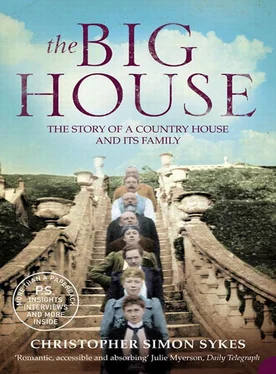
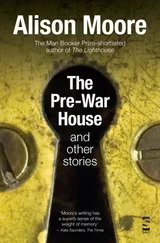

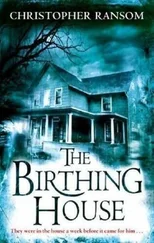



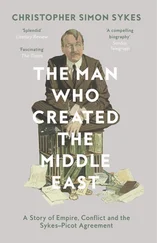
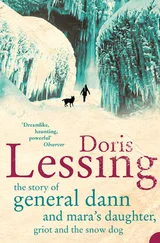
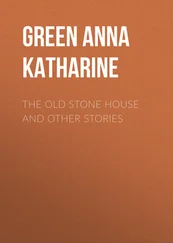


![Edward Ellis - Adrift on the Pacific - A Boys [sic] Story of the Sea and its Perils](/books/753342/edward-ellis-adrift-on-the-pacific-a-boys-sic-s-thumb.webp)